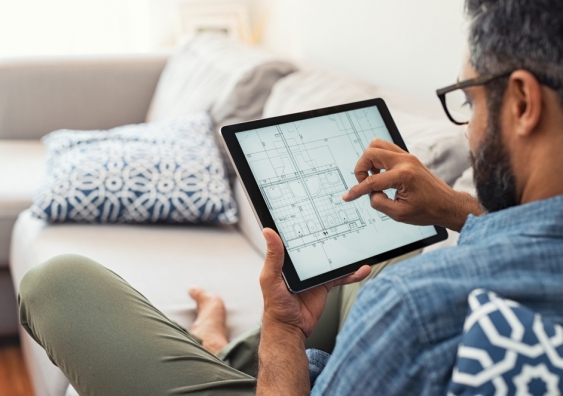Building the architecture industry’s capacity for remote work
With COVID-19 forcing many industries online, a tool co-created by a UNSW Associate Professor makes this move easier for architects and designers.
With COVID-19 forcing many industries online, a tool co-created by a UNSW Associate Professor makes this move easier for architects and designers.

Thousands of employees across industries have started to work remotely to help 'flatten the curve' - that is, to slow down the spread of COVID-19 in Australia.
However, the architecture and design industry have a limited capacity for remote collaboration, making the move to remote work and learning particularly difficult says UNSW Associate Professor M. Hank Haeusler.
“With COVID-19 and the push to work from home, it highlights the future of industries needing to be more online and more digital,” the Director of the Computational Design (CoDe) degree says.
“For some professions, it's easy to continue online collaborations if you need to work remotely for an extended period. In architecture, design, and engineering, it's more difficult.”
He says architects normally work on an application that stays on their desktop.
“In order to work together and share things, both parties need the software on their computer. This also makes it quite difficult for people to work remotely because you need to have the infrastructure,” explains A/Prof Haeusler.
Together with his industry partners, Cox Architecture, A/Prof Haeusler co-developed Giraffe Technology that uses the digital medium of a website to remove these barriers, so that anyone with access to the internet can model and design directly on the web browser on a map of the world.
Similar to a Google Doc, Giraffe allows for multiple people to collaborate and work on a single design at once, from anywhere in the world.
Further, it uses features of computational design to allow architects to automate design processes and model 3D designs.
“Computational design enables architecture to be modelled through programming,” he says. “So instead of drawing a line, you write a computer programme that defines the line.
“The challenge is that many architects do not have an interest in learning programming skills and therefore cannot access these tools.”
He says Giraffe bridges this gap as it is a platform like UBER.
“On one side of the platform, you've got computational designers that can upload their computational design programs that can automate anything, such as solar analysis,” he says.
“On the other side, Giraffe’s graphic user interface enables architects and designers to use the programmes without needing programming skills. It’s like doing a Google search; you type in your query and the complicated algorithm and programming happens in the background, and you see the result.”
To make remote team collaboration as streamlined as possible, users can invite collaborators to their projects by email and use the chat function in Giraffe to design and communicate in the one channel.
Other features that enable Giraffe to be a comprehensive collaboration tool for architects and designers include easy access to calculations on things like floor space ratio, or what carbon emissions the design will produce.
Currently, Giraffe is working with overseas architecture firms on projects in Bangkok, Jakarta and Tokyo, and locally on various architecture and urban design projects in Australia.
“Collaborating both locally and globally is not a big industry concern anymore, and it doesn’t matter what infrastructure you have because if you have a laptop that has an internet connection, you can collaborate. But if you mainly use desktop computers and desktop software, situations like the current COVID-19 case makes working from home a challenge. As Giraffe is a website, everyone can assess their design and continue working with a private laptop and internet connection.”
He says Giraffe makes further use of what digital technologies have enabled in other fields – a democratisation and demonetisation of expert skills.
“Typically, architecture design expertise is expensive and someone in remote Australia wouldn’t have access to the same engineering or architecture services in their proximity as someone in the Sydney CBD. Giraffe breaks that wall down and gives everyone the same access to high expertise tools because the skills inner city firms have can be transferred to the web.”
From an educational perspective, A/Prof Haeusler says Giraffe addresses one of the reasons holding effective collaborative architecture and design classes online is so difficult.
“By allowing students to collaborate on their design exercises and projects together remotely and giving the lecturer an opportunity to comment the design and work with students as well, the students receive a similar face-to-face experience as they would in the classroom,” he says.
“The COVID-19 response has highlighted the need for the industry to be more responsive to digital transformation. Giraffe as a tool offers that already by being an online platform and by allowing remote working in a situation like the one we’re experiencing now.”